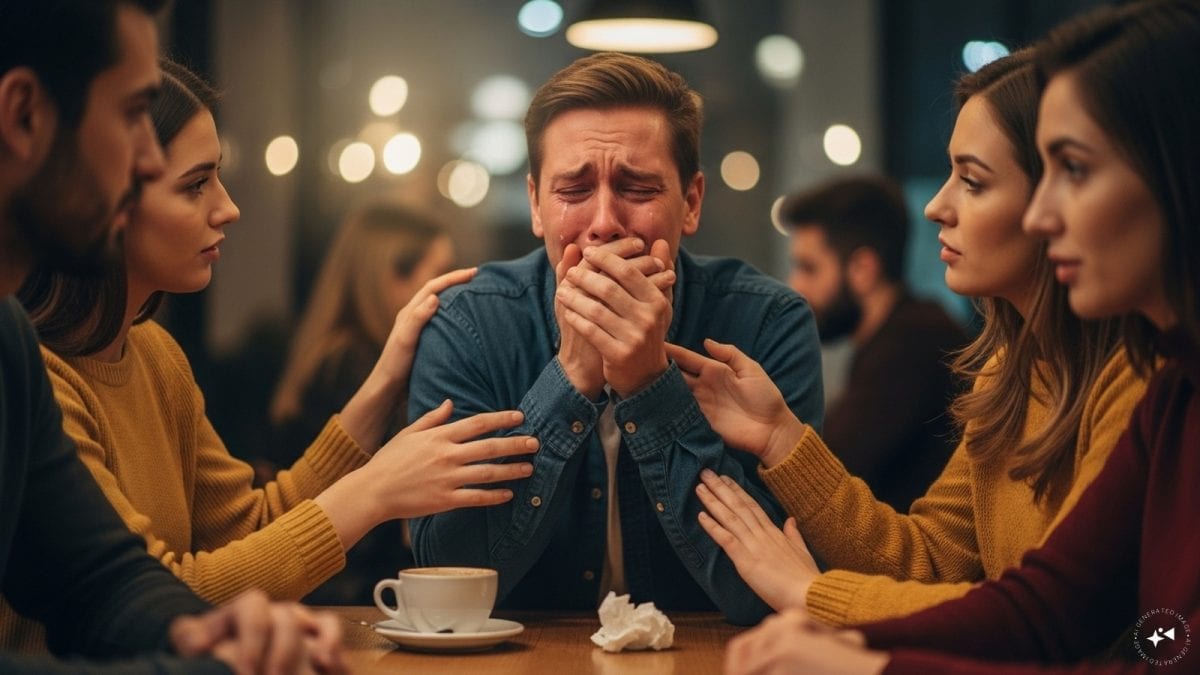Last Updated:August 06, 2025, 18:00 IST
Mumbai gets a crying club: What are crying clubs? Why are they becoming popular? Is there science behind it? What is the Japanese concept they are based on? Explained
Crying plays an important role in mental health by helping regulate emotions, reduce stress, and promote psychological relief. (AI generated)
Looking to release your emotions amid the stress and disappointments? India’s metros have come up with a solution – crying clubs. Mumbai recently got one, while Delhi, Bengaluru already have their versions.
What are crying clubs? Why are they becoming popular? Is there science behind it? What is the concept?
Firstly, why do tears matter?
Crying plays an important role in mental health by helping regulate emotions, reduce stress, and promote psychological relief. Studies have shown that emotional crying activates the parasympathetic nervous system, which calms the body after stress, and may release hormones like oxytocin and endorphins that improve mood and relieve pain. Crying also encourages social support by signalling distress and fostering emotional connection, which can reduce feelings of isolation. However, the mental health benefits of crying depend on context—people often feel better after crying when it happens in a safe and supportive environment, but those with conditions like depression may not experience the same relief.
What is a crying club?
Mumbai’s The Cry Club in Khar offers the definition in an online announcement for its June 15 event – a safe, non-judgmental space to express emotions. It is basically a space where supportive strangers are ready to listen, not fix.
What does Mumbai’s The Cry Club offer?
“Tissues, tea, and emotional support music provided. Ranting, crying, and hugging are encouraged. Designed to help you leave feeling lighter. Step into a space where your feelings are welcome and your tears are safe,” it says.
The Cry Club invites you to embrace your emotions in a gentle and non-judgmental environment, it says. “Whether you’re carrying heartbreak, burnout, or just the weight of the week, come as you are. Surrounded by soft lighting, comforting tea, and people who understand, you’re free to cry, rant, or simply sit in silence. There’s no pressure to explain or fix anything. It’s a quiet rebellion against emotional suppression a place to let go, breathe, and leave feeling just a little bit lighter,” it says.
Do other metro cities have such clubs?
Surat has had a Healthy Crying Club since 2017, where people gather once a month to cry. Delhi, Bengaluru, and Hyderabad host informal vulnerability circles inspired by Ruikatsu.
What is the Japanese concept behind crying clubs?
Ruikatsu, literally meaning ‘tear activity’ or ‘tear-seeking’, is a Japanese wellness trend focused on the intentional act of crying to relieve stress, improve emotional health, and promote mental well-being. The term combines the words ‘rui’ (tears) and ‘katsu’ (short for “katsudō,” meaning activity), similar to other Japanese trends like ‘shūkatsu’ (job hunting) or ‘konkatsu’ (marriage hunting).
Ruikatsu involves organised sessions where participants gather to watch emotional films, listen to touching stories, or read heartfelt letters—anything that can provoke a genuine emotional release. The idea is that crying helps people release bottled-up emotions. These sessions are sometimes led by professional ‘tear therapists’ who guide individuals through the process.
How did the concept come up in Japan?
The term was first coined around 2013 by Hiroki Terai, a Japanese entrepreneur who originally gained attention for offering ‘divorce ceremonies’. He noticed that people going through breakups or stressful life events often felt better after crying, and this observation led him to create structured sessions where people could cry intentionally to relieve emotional tension.
Why is Ruikatsu popular?
In high-pressure environments like Japan’s work culture, emotional suppression is common. Ruikatsu provides a safe and socially acceptable outlet to let those feelings out. Scientific studies have also supported the idea that crying—especially emotional crying, not just reflex tears—can reduce stress hormones, lower blood pressure, and promote emotional clarity. Participants often report feeling lighter, calmer, and more emotionally balanced after a session.
Why Ruikatsu is key to Japan
Ruikatsu taps into a broader cultural shift in Japan toward mental health awareness, emotional literacy, and alternative forms of stress relief. While Japan traditionally values emotional restraint and stoicism, especially in public or professional settings, trends like ruikatsu are helping normalise emotional expression in a structured, purposeful way.
With Agency Inputs
At the news desk for 17 years, the story of her life has revolved around finding pun, facts while reporting, on radio, heading a daily newspaper desk, teaching mass media students to now editing special copies …Read More
At the news desk for 17 years, the story of her life has revolved around finding pun, facts while reporting, on radio, heading a daily newspaper desk, teaching mass media students to now editing special copies … Read More
view commentsNews cities » mumbai-news Mumbai Gets A Crying Club: How Japan Came Up With ‘Top Tear’ Solution For Stress & WoesDisclaimer: Comments reflect users’ views, not News18’s. Please keep discussions respectful and constructive. Abusive, defamatory, or illegal comments will be removed. News18 may disable any comment at its discretion. By posting, you agree to our Terms of Use and Privacy Policy.
Read More



